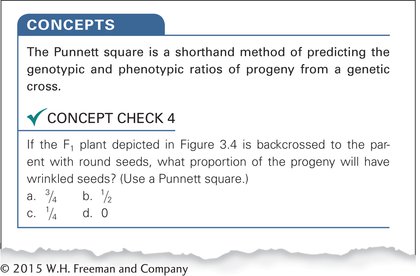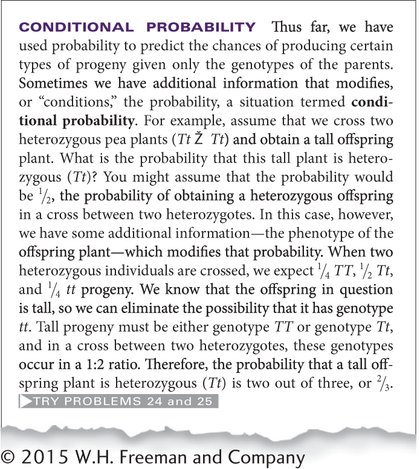Hallmark Features
Key Concepts and Connections Throughout the book, I’ve included pedagogical devices to help students focus on the major concepts of each topic.

Concepts boxes throughout each chapter summarize the key points of the preceding section. Concept Check questions allow students to quickly assess their understanding of the material they’ve just read. Concept Checks are in multiple-
choice or short- answer format, and answers are listed at the end of each chapter. Connecting Concepts sections compare and contrast processes or integrate ideas across sections and chapters to help students see how different genetics topics relate to one another. All major concepts are listed in the Concepts Summary at the end of each chapter.
Accessibility I have intentionally used a friendly and conversational writing style so that students will find the book inviting and informative. The introductory stories at the beginning of every chapter draw students into the material. These stories highlight the relevance of genetics to daily life and feature new research in genetics, the genetic basis of human disease, hereditary oddities, and other interesting topics. Four of the eighteen chapters have new introductory stories in this edition.
Clear, Simple Illustrations The attractive and instructive illustrations continue to play a pivotal role in reinforcing the key concepts presented in each chapter. Because many students are visual learners, I have worked closely with the illustrators to make sure that the main point of each illustration is easily identified and understood. Most include narratives that take students through a process step by step or that point out important features of a structure or experiment. Throughout the book there are illustrations that facilitate a student’s understanding of the experimental process by posing a question, describing experimental methodology, presenting results, and drawing a conclusion that reinforces the major concept being addressed.

Emphasis on Problem Solving I believe that problem solving is essential to the mastery of genetics. It is also among the most difficult skills for a student to learn. Newly reformatted Worked Problems (see New and Reorganized Content on p. xvi) walk students through a key problem and review important strategies to consider when tackling a problem of a similar type. Try Problem links point to end-
of- chapter problems that students can work to test their understanding of the material just read, all with answers in the back of the book so students can check their results. At the end of each chapter are a wide range of questions and problems, organized by chapter section and subdivided into Comprehension Questions, Application Questions and Problems, and Challenge Questions. Some of these questions draw on examples from published papers and are marked by a data analysis icon. Page xivStreamlined Content To provide students taking a brief genetics course with the most important concepts, I’ve shortened the book considerably. The third edition of Genetics Essentials: Concepts and Connections is about 250 pages shorter than Genetics: A Conceptual Approach, a reduction of more than 35%.